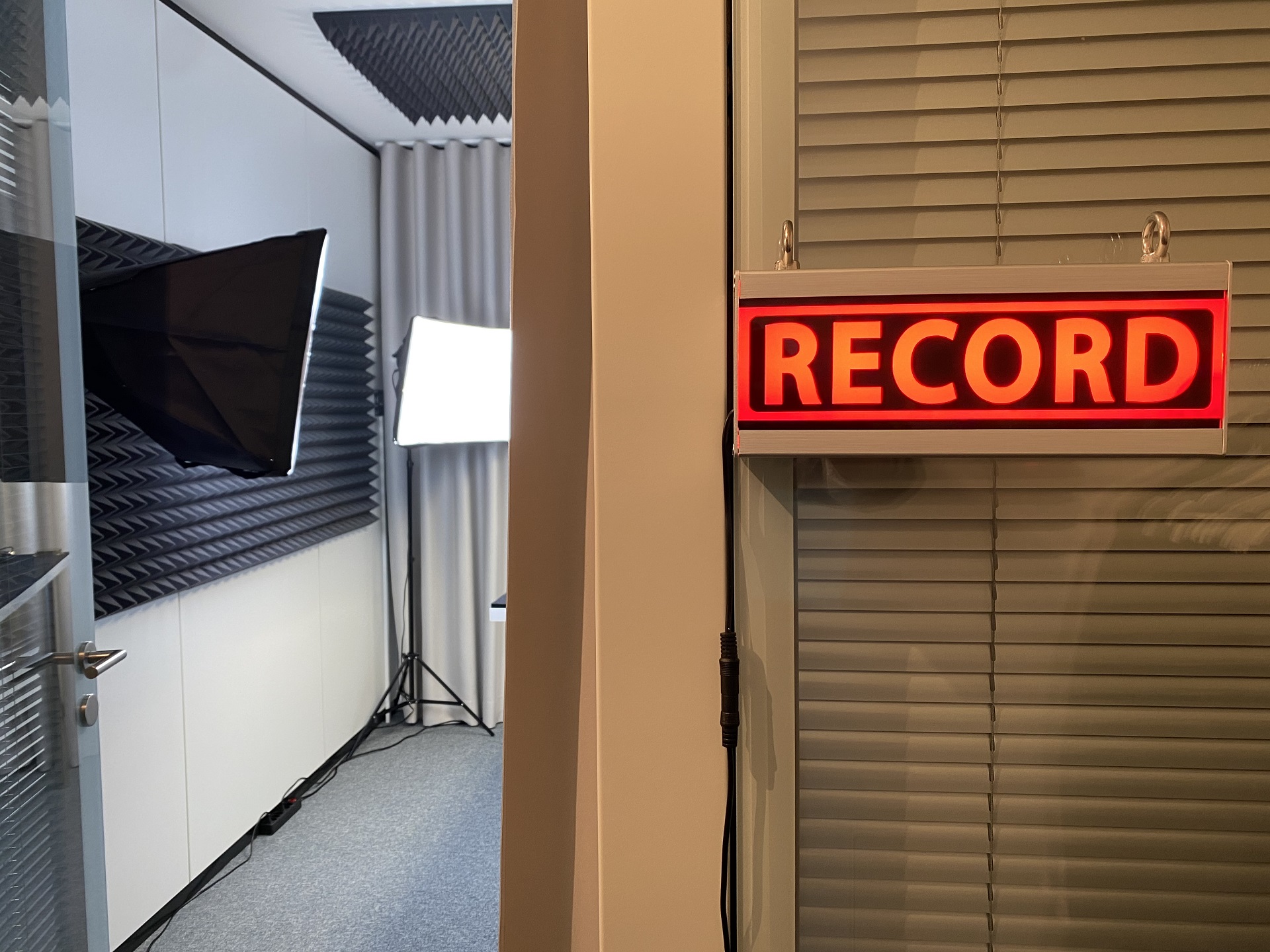How do you start your own podcast? And what do you need to record a podcast so that it ends up on Spotify & Co. and is listened to? In our blog, we reveal seven tips on what makes a good podcast. Because the figures show: Audio formats are the winners of the coronavirus crisis!
Last year, according to Horizon 900,000 podcasts were created worldwide last year. We at FBC also produce some of them in our in-house podcast studio. Broadcasts "to go" with a wide range of topics, independent of special broadcasting times. But how do you take advantage of this trend and make your own podcast a success?
1. preparation is everything
Before you even get started, you should think carefully about what the added value behind your podcast is. Why is your podcast needed? What should it be called? What do you want to say and what is your goal? Who and where are your listeners? Are you financing your podcast yourself or are you starting with sponsors? How many episodes should the first season have and at what intervals will they be published? The algorithm, and of course your future subscribers, will be happy if you show regularity. Once the strategy and therefore the basic framework are in place, you have a well thought-out plan.
2. be creative in the choice of topics
After the strategy, it's time to focus on the content of the podcast episodes. Added value for listeners also plays a major role in the selection of topics. What information do you want to give them? What do you want them to learn? How do you want to entertain them? Do you bring in guests and which ones are likely to interest your listeners the most?
It's best to come up with snappy podcast titles that make people curious to listen to the episode. A study by Statista from 2020 shows that for 45% of respondents, the optimal length of a podcast is between 11 and 30 minutes. So don't take on too much. Make it crisp and exciting!
3. the right equipment
A standard podcast microphone such as the Samson Meteo microphone is sufficient for home use. Plus recording software and an editing program. We recommend Audacity for Microsoft users and Garageband for Apple users. If you want more features and already know your way around a bit, it's worth investing in Adobe Audition.
If you work with sponsors or want to set up a really professional "radio show" in podcast format, you should look around for a professionally equipped podcast studio - such as our FBC Podcast Studio. With padded walls, reverberation and background noise don't stand a chance. This is also where we record our own podcast StoryRadar in which we give weekly tips on PR, communication and marketing. But our podcast studio is also mobile! We have already recorded in Knies Zauberhut at the Rapperswil Children's Zoo or in the Federal Palace for the podcast of the Swiss LiveCom industry UNPLUGGED podcast.

4. recording: be real!
During the recording: stay authentic! Nothing is more boring than a read-out text without personality. Make key points and try to speak freely and to the point. If you miss something, take a short break and simply say the sentence again. However, you should not cut out every slip of the tongue at the end. They make the audience smile and feel connected because they are human.
Do you have problems with "Uhs" and "Ehms"? Tip from us: Imagine an arrow that gets longer and longer and use this arrow to address the other person. This will help you speak purposefully and without annoying filler words. Don't forget to do a sound check before recording to make sure the sound is clean and the distance from the speaker to the microphone is correct. Chewing gum, cell phone sounds or rustling paper are absolute no-gos.
5. post-production: editing & mixing
Post-production is all about editing, mixing and distributing the podcast. When editing, cut out any rough mistakes and write down the most exciting statements for the episode description. Keep it short here and whet your appetite for more! You need a hosting platform so that the podcast can also be found on popular platforms such as Spotify, Deezer, Google and Apple Podcasts. From there, the podcast is set up with all the information and files and you only have to take care of uploading the new content for each new episode. The episode then appears on all channels with one click.
Our hosting recommendations: Libsyn or Simplecast. You can also see statistics on downloads, device usage and more. This not only tells you whether your podcast is being listened to at all, but also which topics are well received by your target group.
6. marketing: advertising permitted
At the end of the podcast, refer to further links, social media channels, websites or sponsors. Ask for feedback and ratings from listeners. Recommendations keep your podcast alive and you find out what your target group likes. Don't forget to create photo and video material that you can use on your website or social media channels to promote the podcast. Record a short video (maximum 30 seconds) and say what the episode is about. Here is an example from our client Lidl Switzerland, for whom we produced the podcast Schnurri with Burri with Anita Buri.
Have you got the urge to start your own podcast? With our tips, nothing stands in your way. If you do, we are always on hand to support you from conception and strategy to recording, post-production and marketing. You can find more information about our services here. Let's go!


